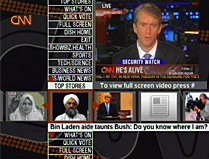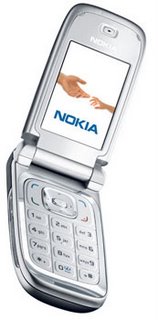MocoNews has a very comprehensive list of 3GSM mobile TV articles with short synopses.
Some highlights from the
post:
Ireland Online"John Delaney, principal analyst at Ovum, said mobile operators were now looking to recoup investment on 3G through new services such as mobile TV while handset manufacturers see the technology as a way to encourage a fresh boom in sales.
He said Virgin’s decision to use the DAB network rather than 3G or DVB-H would provide a cheaper and quicker but less comprehensive service.
He added: “It is becoming clearer that what is catching the industry’s imagination is providing TV on mobiles.
“Yet what is less clear is what people will be prepared to pay for it."
Game Daily BIZ:
"While entertainment generates some $5 billion in revenue for the mobile phone industry -- less than 1% of overall mobile phone revenues -- revenues could rise to $10 billion in the U.S. if the two sides can band together to crack the mobile advertising code, according to McKinsey and Co. global telecoms chief Rolando Balshinde.
"
Advertising will make it viable," explained MTV Networks chief digital officer Jason Hirschhorn. "
Free is always good for the consumer."
But while most seemed to agree on the issue of advertising, no one seemed to know what the consumer actually wants: video-on-demand, live TV, community services, mobile soaps, sports or downloads.
The Guardian:
The problem is that the networks are so busy just gobbling up licences to existing content such as film trailers, movie star interviews, music and TV shows - and pushing some pretty low-quality stuff at that - that they could be missing the main event. History shows that this always happens with new media. People recycle what has worked before in the hope that it will work again.
This is why (Peter) Bazalgette's call is so apt and well-timed. He suggested that three things will mark out native mobile content; the
killer application would need to harness video, consumer participation and the
user generation of proactive consumers.
On the way to creating these new media forms, there is a lot to learn about the desire of people to consume and create content on handheld devices. The conference was jammed with contradictory research. Some companies think people want to watch scheduled linear TV on their mobiles. Others, including Apple, are showing that short-form content is not necessarily the be-all and end-all. Still others, and there is definitely something in this, are finding
revenue models for user-created content that is shared peer to peer."
Labels: In-game Advertising, Mobile, Online Advertising, TV














